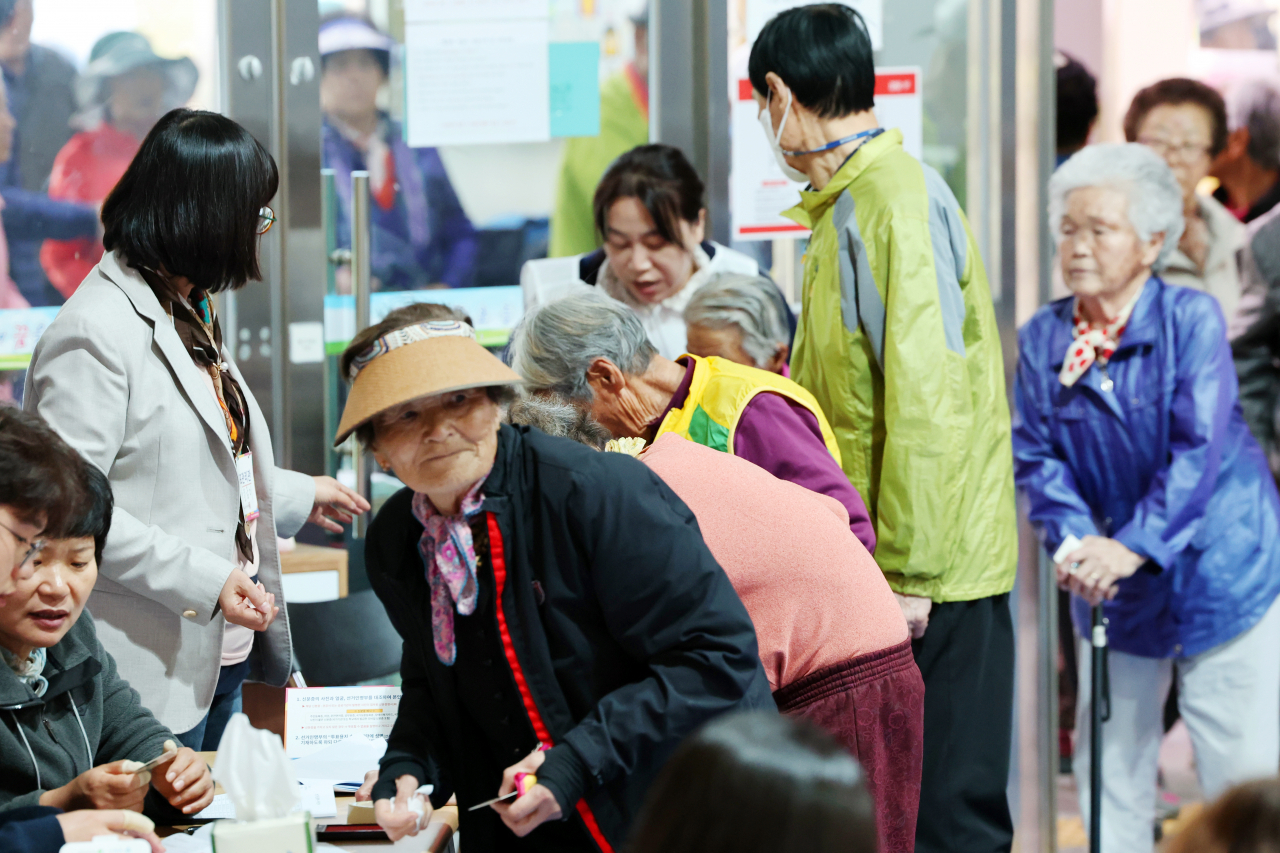Average pension benefits for men nearly double that of women: report
By Yoon Min-sikPublished : April 15, 2024 - 13:17

Female beneficiaries of the national pension in South Korea were on average receiving 390,845 won ($282) a month as of November 2023, compared to 756,898 won for their male counterparts, according to the National Pension Service on Monday.
The steep gender disparity is attributed to female workers being subscribed for less time overall than men, which is mainly due to career interruptions from factors like childbirth and child care. The benefits of the state-run pension program are proportionate to the time a beneficiary spent subscribed, meaning those who worked longer receive more after retirement.
South Koreans between the age of 18 and 60 with an income are mandated to subscribe to the National Pension, along with foreign nationals staying in the country for at least six months.
According to the NPS, there were 2.09 million female beneficiaries in November, an exponential rise compared to 30,000 in 1999. This is partially due to rise in the female employment rate, which marked 44.3 percent in January 2000 and went on to surpass the 60 percent mark for the first time in 2022.
The number of women receiving the state-provided pension is still substantially less than the 2.36 million male beneficiaries. The gap is expected to decrease in time, as 45.7 percent of all current subscribers of the National Pension program are women, as of November last year.
But the accumulated gender disparity in the workforce and among pension subscribers has led to a wide gap between benefits for women and men, in terms of how many people receive the pension and how much they receive.
According to the Korea Institute for Health and Social Affairs' analysis of the NPS' 2022 data, there were 728,900 men receiving a pension after being subscribed to the National Pension for at least 20 years, compared to 120,500 women.
The report showed that the subscription rate for women kept up with or surpassed that of men through their 20s -- which is when most men serve their mandatory military duties for a minimum of some 18 months -- but that started to change when they entered their 30s.
"(The government) must ensure that the career interruptions of women due to childbirth and child care must not lead to them being cut off from the national pension subscription, with policies such as expanding the credit benefits (for women)," said Lee Da-mi, the researcher for the KIHASA who conducted the study.
The credit refers to adding to the subscription period in certain cases for people unable to be subscribed to the national pension for a certain period of time.
For example, a woman who has had two children can have 12 months added to her total subscription period of the pension program, while a man who served his mandatory military service could have six months added. The credit for a mother of three children would be 30 months, and the credit for childbirth would max out at 50 months for a mother of five or more.
One must be subscribed for at least 10 years before the legal retirement age of 60 to receive benefits. If a woman has been subscribed to the program for nine years before retirement but has two children, she is viable to receive the benefits thanks to the childbirth credit.
Those who failed to be subscribed for 10 years before retirement can either apply to get the money back within five years or continue to subscribe to the program after the retirement age for the remainder of the mandated 10 years.



















![[Today’s K-pop] Treasure to publish magazine for debut anniversary](http://res.heraldm.com/phpwas/restmb_idxmake.php?idx=642&simg=/content/image/2024/07/26/20240726050551_0.jpg&u=)